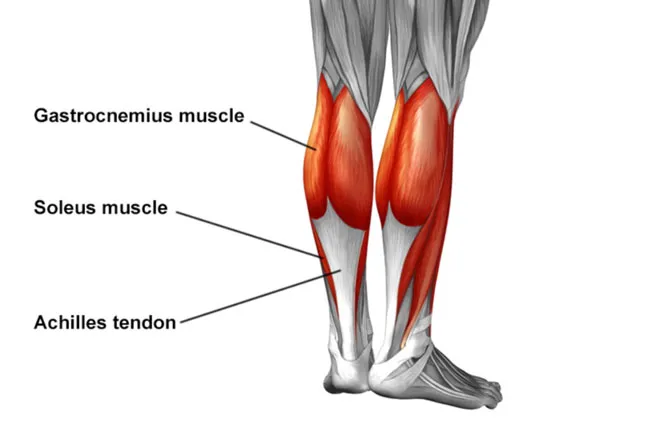In this video we discuss:
- Common causes of Achilles pain in lifters and runners
- 3 easy exercises that you can start doing to alleviate Achilles tendon pain
Transcription of the video:
What’s going on everybody today I’m going to show you three types of exercises that you can do to treat your own Achilles pain.
Now, with most gyms unfortunately shut down, many of us have been stuck doing home workouts for the past several weeks. And if you’re like most of us, you’re doing a lot of plyometric activities like squat jumps, split squat jumps, and running for lower body training.
If you hadn’t already built a base in plyometric training before you decide to jump all-in on them during quarantine, then you may find that things like your Achilles tendon are starting to act up, because plyometric activities place a pretty high amount of stress on our soft tissues.
So if you have developed Achilles pain as a result of this, there are two things that you need to do in order to get this under control.
The very first and most important thing to do is to decrease the amount of plyometric training that you’re currently doing. This means to do less intense and less demanding plyometrics and to reduce the amount of volume that you’re doing.
If you do this, often, this is the only step you’ll need to take in order to reduce your pain. Now, if you can’t control your pain by just reducing your plyometric activity, the second thing you should do is start implementing the three types of exercises that I’m going to show you today.
The first type of exercise that we’re going to cover is just an isometric calf raise. For this exercise, you go to the top of the calf raise and hold that for three to five sets of however long you can comfortably hold that position.
Over time, you’re going to slowly build up to five sets of 45 second holds. Isometrics are a great way to start reintroducing some load to the tendon, as well as building capacity and resiliency without further pissing the tendon off.
That is a big reason that I like to start with this sort of exercise. In some cases of Achilles tendon pain, you can do these isometric holds with a nice straight position in order to bias one part of the calves called the gastrocnemius a little bit more, or you can do them with the knees bent position to bias a different part of the calves called the soleus a little bit more.
Further, if this is too easy for you just your bodyweight, you can make this exercise more challenging by either doing single leg isometrics or adding external load in the form of kettlebells, dumbbells, or a weight in a backpack.
The second type of exercise that we’re going to go over today are tempo calf raises with a straight knee. I usually like to use a 3-0-3-0 tempo, or 2-0-2-0 tempo. What this means that we’re going to do the concentric and the eccentric for three seconds each or two seconds each, depending on which tempo that you choose for these tempo calf raises.
I like to progress people to three to four sets of 8 to 10 reps with an appropriate load. You can progress the tempo straight knee calf raises the same way as you would progress the isometric calf raises.
You can do them on single leg to increase the demand from your body weight or you can use extra load in the form of kettlebells, dumbbells, or weight in a backpack.
The third and final type of exercise that we’re going to go over today are tempo calf raises with a bent knee, just like the bent knee isometrics.
The bent knee position of a tempo calf raise helps to bias the soleus muscle, which is smaller than the gastrocnemius and is often overlooked when treating Achilles tendon pain. Just like with the tempo calf raises with a straight knee, you’re going to use a 3-0-3-0 or 2-0-2-0 tempo for three to four sets of 8 to 10 reps.
You can perform these standing with just your bodyweight, or even d0 them seated with a weight on top of the knee.
This exercise can be further progressed by switching to a single leg variation or increasing the external load.
Once you perform these isometric and tempo based exercises for a while and your Achilles tendon pain starts to calm down, then you should slowly introduce faster speed exercises and plyometric activities like jumping, running, and bounding. If you guys found this information helpful, please hit that like button and share this video with somebody who might have some use for this information.
If you need personal help resolving your Achilles pain, or coming up with a plan to get you back into the gym after an injury, schedule a call with our expert physical therapists by clicking the button below!
Barbell Physical Therapy and Performance is a physical therapy clinic located in North Haven, Connecticut that specializes in helping injured lifters, barbell athletes, and gym-goers resolve their injuries and get back to training without any pain medications, surgeries, or skipping the gym. We also help people in the New Haven, Branford, West Haven, Hamden, and Cheshire areas!



